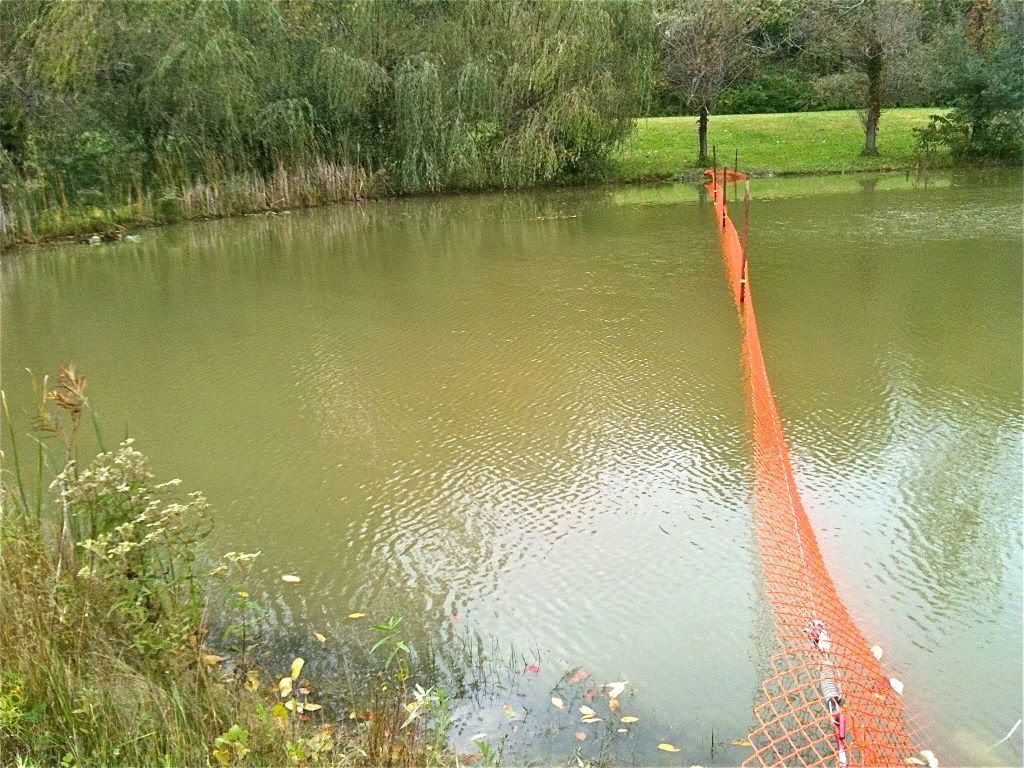In another forum Esshup asked about the results of an electro-shock survey I had done last September on our 6 acre pond. This forum is more relevant than the one in which the question arose. I much appreciate his interest, and that of anyone else who reads this, or may wish to comment on it.
I was prompted to do the electo-shock survey because I had made two mistakes about 25 years ago. First, I introduced way too many (180) grass carp. Over the years, the GC ate all the weeds and the nutrients now go into phytoplankton, making the water murky and green. The second was that I dumped in 22 white crappie from the local reservoir up the street. Lately, I had become aware that the LMB were undersized. Whereas I used to catch a 5-6 lb. bass almost every week, these days I am lucky to catch one over 14", and usually it's underweight. The BG also seem to lack the heft and numbers they once had.
So, the collection resulted in 79 LMB ranging from 3.4" to 14", with an average size of 7.9" and average weight of 5.7 oz. They were returned to the water.
78 BG were collected ranging from 1" to 9", with an average size of 6.1" and average weight of 3.2 oz. They were returned to the water.
53 white crappie were collected from 7.8" to 10", with an average size of 9.1" and average weight of 6.1 oz. All of the WC were tossed into the woods.
5 YP were collected from 9.7" to 11.7", with an average size of 10.7" and average weight of 7.2 oz. They were returned to the water.
I have a small population of large CC but none were collected. The same is true for grass carp. I hold my introduction of GC (and subsequent lack of weeds) and my introduction of WC responsible for all of my pond problems.
The report from Jones Fish Hatchery is 7 pages so to be as succinct as possible here, let me reference only the most important points. It said, "...results indicate stunted population dynamics occurring in the largemouth bass, and a concern that the same scenario may be reached in the bluegill populations."
The report notes that to date this year (to September, 2011), I removed a total of 850 WC, and that removal must be continued. It also states that the stunted and underweight LMB are "due primarily to a strained available forage base."
Most of the report can be summed up with this quote, "increasing the size of the largemouth bass will be accomplished through reducing competition (heavy harvest of the white crappie, medium size largemouth bass and channel catfish of 20”+ in size) and supplementing the available forage base by implementing a forage fish stocking program. This in combination with harvesting medium size bluegills will help reduce the reproduction and recruitment rates while allowing the remaining bluegills to achieve larger sizes due to increased forage."
The Jones Hatchery stocking recommendations are as follows:
Fathead minnows, 150 pounds
Golden shiners, 175 pounds,
Yellow perch, 200, 6 to 8"
Total cost, $3,476.25 plus tax (Ouch!)
I'm sure all of these measures will help. But I'm a bit disappointed in the emphasis on buying forage fish. I have yet to order the fish. I've been thinking that restoring weeds to the pond is one of the main issues to address, and the report barely mentions that. In furtherance of that my neighbor and I constructed a fence spanning a small portion of the pond where weeds can get a foothold without interference from the GC. Below is a photo.
Thanks again for any and all interest and feedback!
